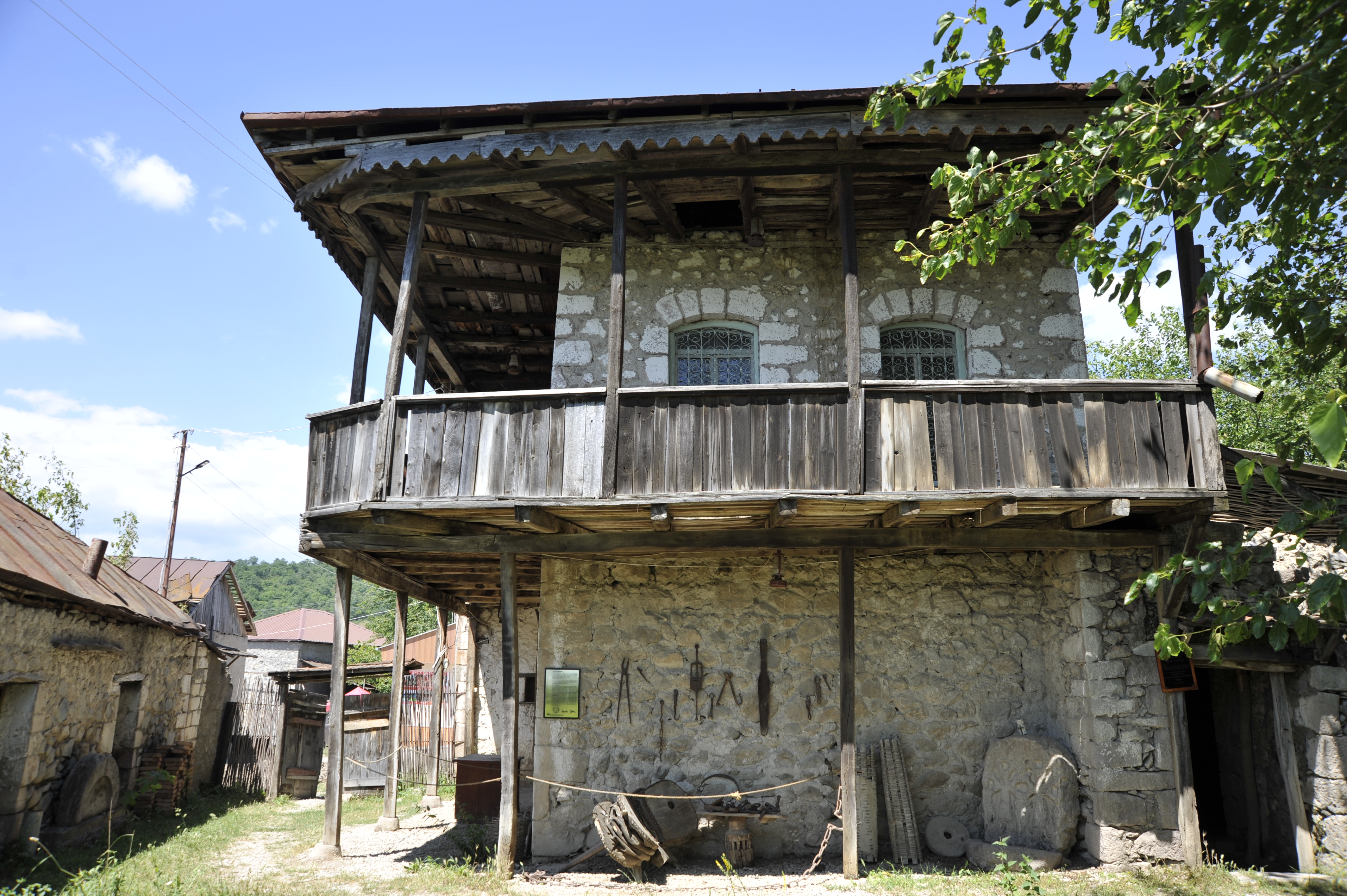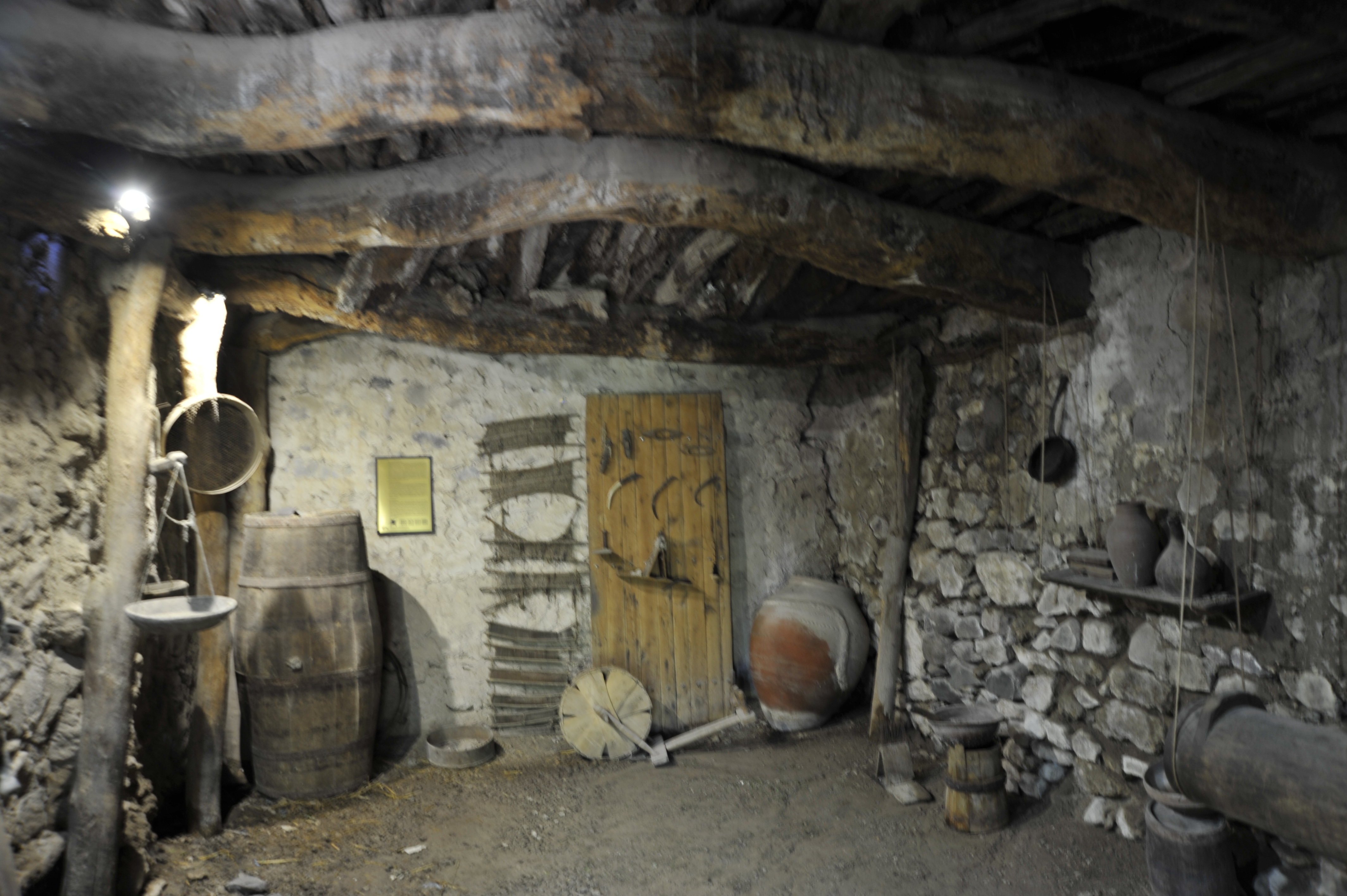
Nikol Duman House Museum
History
Nikol Duman's House Museum has been operational since 2004 and is located in the heart of Tsaghkashat village, Askeran region, Artsakh, next to the village's House of Culture (Fig. 1).
The museum was established in the house where Nikol Duman, a prominent public figure of the 19th and early 20th centuries, was born.
Several additional dwellings, constructed at the close of the 19th century and the beginning of the 20th century, are located in the vicinity of the museum. Collectively, they constitute an aesthetically pleasing "ethnographic district".
The collection
The museum, through its four exhibition halls, offers a comprehensive portrayal of both the life and legacy of Nikol Duman, as well as the daily life and culture of Artsakh in the 19th and early 20th centuries (Figs. 2, 3).
The first floor of the museum houses the initial exhibition room, which is dedicated to the life and work of Nikol Duman.
The living room on the second floor of the museum house has been meticulously restored in the style of the 19th century, showcasing the traditional lifestyle, household items, and craftsmanship of a 19th-century Artsakh village. The room features a variety of rugs, carpets, embroideries, and oak furniture, among other artifacts. At the end of the hall, in the balcony area, a restored kitchen displays period-appropriate dishes and kitchen furniture.
The communal room, located adjacent to the museum building, offers a vivid representation of 19th-century life in Artsakh. The artifacts on display provide visitors with a thorough understanding of the region's economic activities during a given era. The collection features wooden chimneys, pulleys, vessels for storing wine and other liquids, grain granaries, and various other items. A particularly noteworthy exhibit is a khachkar, or stone cross, which originally stood in the yard of a house within the district. The locals have indicated that this khachkar was moved from the courtyard of the Surb Astvatsatsin Church in the village to the courtyard of a private residence to protect it from further deterioration (Fig. 4).
In the second section of the courtyard, key architectural elements of a 19th-century Artsakh courtyard have been restored, including the bakery (tonratun) and the adjacent utility area.
The museum extends into the "ethnographic quarter," which features a 19th-century street and a collection of residential structures. These include several restored 19th-century houses, carefully reconstructed to reflect the architectural style of the period, along with a souvenir shop and a wine house with a cellar.
The activity of the museum before the war
The museum was established through the efforts of private individuals and has played a significant role in the cultural life of both the local community and Artsakh as a whole. It has also been incorporated into the itineraries of tourist routes in Artsakh.
A wide range of educational programs, thematic lectures, and screenings of educational films have been conducted at the museum. Additionally, the museum celebrates significant national holidays, as well as events such as the International Day of Museums, the International Day of Monuments and Sites, and other professional holidays and anniversaries.
The condition after the war
Following the forced displacement of the Armenian population from Artsakh in September 2023, the museum fell under Azerbaijani control. As of the time of writing, no information is available regarding the current condition of the museum.
The museum and international law regulations
As with any cultural property, the international legal-legislative basis for the protection of museums and collections is the 1954 Hague Convention for the Protection of Cultural Property in the Event of Armed Conflict and its two protocols (1954 and 1999). According to Article 4 of the 1954 Hague Convention, any acts of vandalism, theft, robbery, misappropriation, hostilities, and reprisals against cultural heritage are prohibited. Furthermore, according to the first Hague Protocol of 1954, it is forbidden to destroy cultural or spiritual values in occupied territories. The Second Hague Protocol of 1999 reaffirms this requirement and classifies such acts as international crimes under Article 15. The destruction of cultural values is also prohibited by four international conventions and protocols on the protection of war victims, the laws and customs of war established in the Geneva Conventions of August 12, 1949, as well as relevant UN resolutions and human rights treaties.


